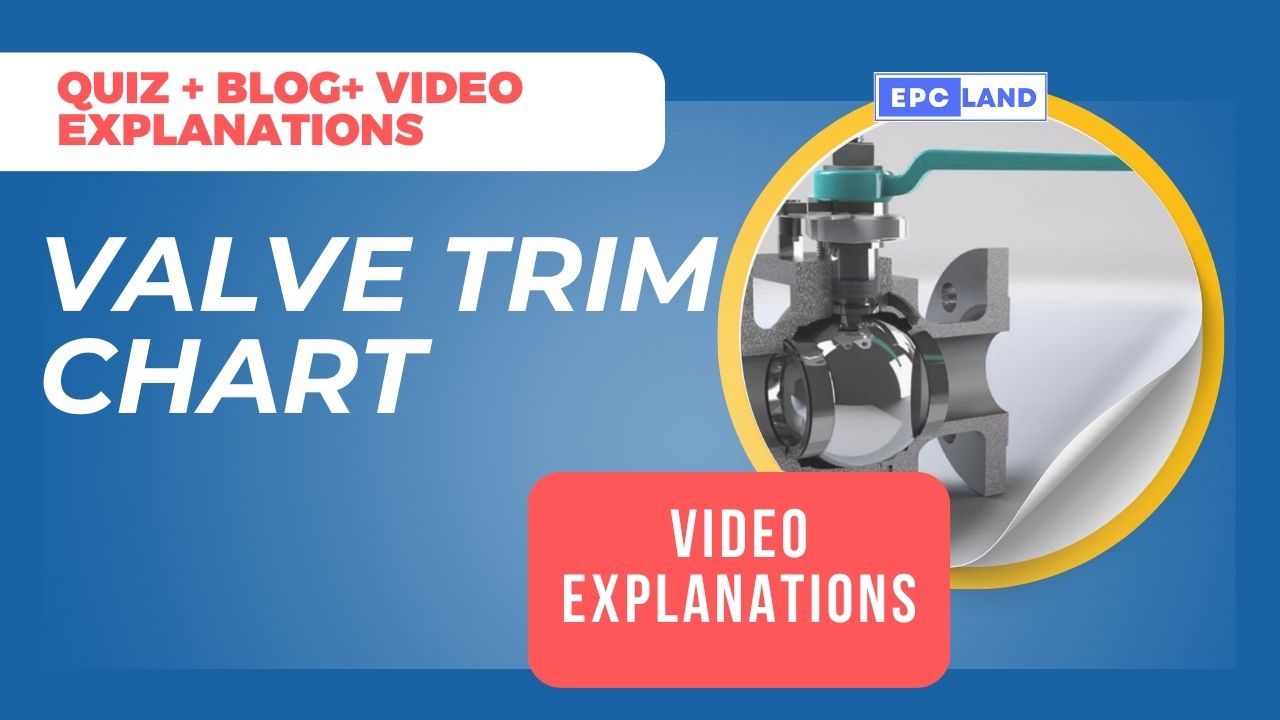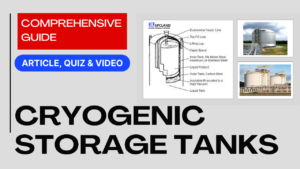Valve Trim Chart: Master 10 Crucial Concepts
Welcome to EPC Land, your platform for learning piping engineering in a simple and structured way. In this content, we delve into the essential Valve Trim Chart, a vital reference that significantly simplifies valve material selection. Instead of grappling with specifying individual materials for internal valve components like the disc, seat, stem, back seat, and sleeves, the Valve Trim Chart utilizes a streamlined system of trim numbers. Each unique trim number correlates to a specific combination of materials designated for these critical internal parts, eliminating complexity and enhancing efficiency during valve ordering and specification. Understanding the Valve Trim Chart is fundamental for any professional involved in valve procurement and material selection in piping systems.
Table of Contents
👉 Check Course on Piping Engineering
Test Your Knowledge: 10 Multiple Choice Questions
1. What does valve trim primarily refer to?
2. Which of the following is listed as a component of valve trim?
3. What is the primary purpose of using a trim number in conjunction with a valve trim chart?
4. What is a benefit of using trim numbers for valve specification?
5. Which standards are mentioned as providing lists of commonly used valve trim materials and corresponding trim numbers?
6. Which material is highlighted as suitable for service with strong acids like sulfuric acid?
7. For which applications is Monel noted as an excellent material?
8. ASM A 410 13 chrome is known for which key properties?
9. What type of service is 316 stainless steel particularly ideal for?
10. What does specifying a trim number automatically ensure when selecting or ordering valves based on the chart?
👉 Browse EPCLAND Courses
Major Takeaways
- Valve Trim Chart is a key reference simplifying valve material selection for internal parts like the disc, seat, stem, back seat, and sleeves.
- Instead of specifying materials individually, a Valve Trim Chart uses trim numbers, each corresponding to a group of materials for internal components.
- Using trim numbers saves time and effort in valve ordering and specification by eliminating the need to define material grades for each part.
- Standards like API 600 and API 602 provide lists of common valve trim materials and their corresponding trim numbers.
- Specific materials such as 13 chrome, 316 stainless steel, Alloy 20, and Monel are common in Valve Trim Chart specifications, each suited for different service conditions.
- The Valve Trim Chart standardizes valve procurement and helps avoid confusion or errors in specifying material grades.
Conclusion
Understanding the Valve Trim Chart is indispensable for anyone involved in piping engineering and valve specification. By using trim numbers, the complex process of selecting appropriate materials for valve internal components is significantly streamlined, leading to more efficient and accurate procurement. The Valve Trim Chart provides a standardized approach, ensuring that the correct materials are used for the specified service conditions.
👉 Visit Quiz Blog Collection



